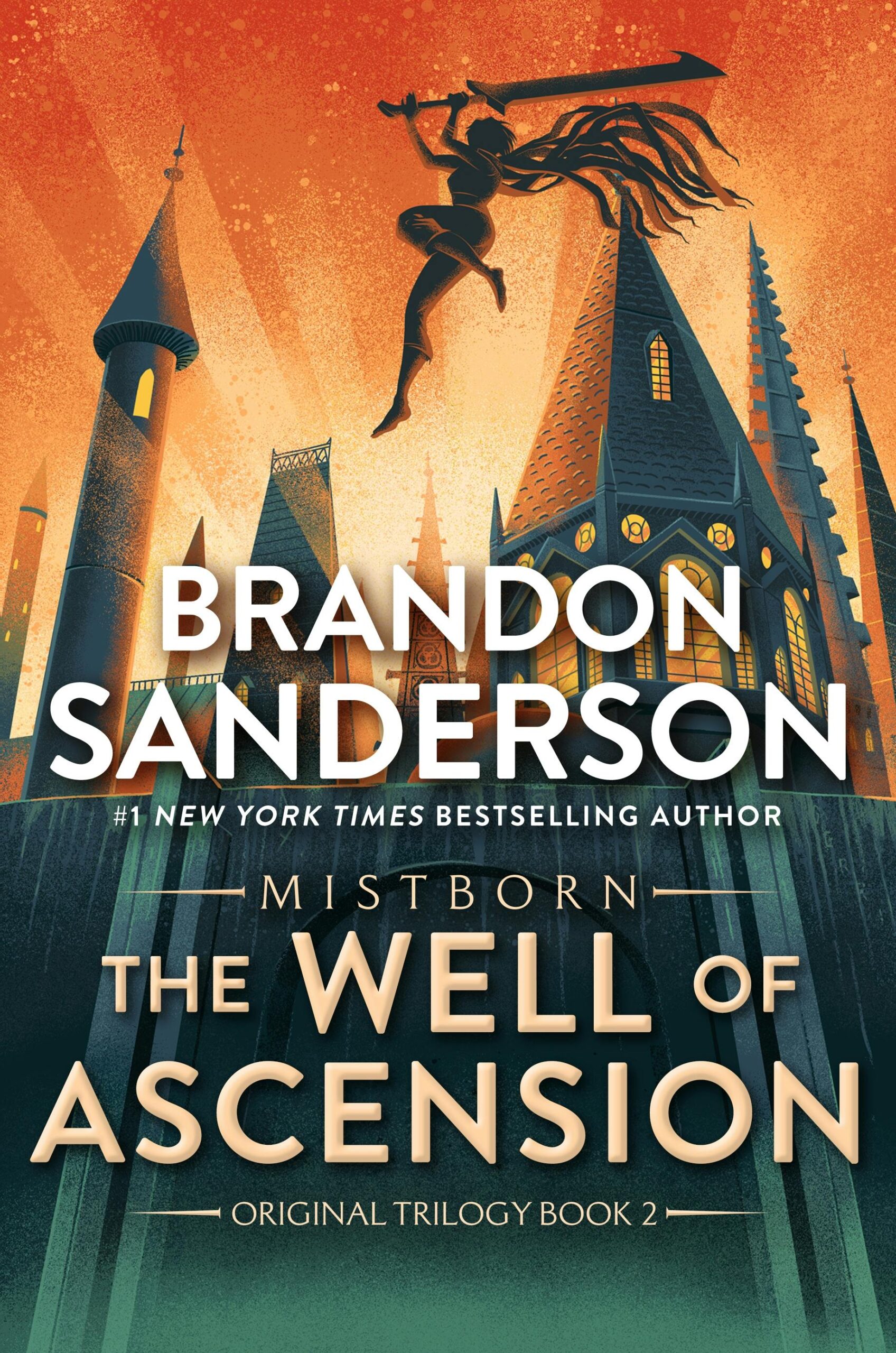
The Well of Ascension
55
by Sanderson, BrandonThe chapter opens with Straff Venture awakening and relying on Black Frayn to energize himself for the day. Confident and eager, he meets with his general, Janarle, to discuss the state of Luthadel, which appears eerily quiet after the koloss rampage. Straff hopes the koloss have destroyed each other, leaving the city ripe for his taking. His army of fifty thousand soldiers prepares to march, anticipating plunder and shelter within the city walls. Straff’s optimism is palpable as he envisions a bloodless victory and uncontested control of Luthadel’s riches.
However, their plans are disrupted when scouts report the koloss are not only alive but gathering outside the city. Straff remains confident, noting the reduced numbers and their decision to abandon defensive positions. As the koloss begin their charge, Straff’s army prepares for battle, with archers ready to volley. Yet, Straff’s assurance wavers when he notices human soldiers emerging from the city—a development he hadn’t anticipated. The situation grows more chaotic as the koloss advance, and Straff begins to question his decision to lead from the front.
The tension escalates when an unexpected projectile arcs toward Straff’s army. Initially mistaken for an arrow or rock, it is revealed to be Vin, hurtling downward with a koloss sword in hand. Straff’s shock is evident as he realizes his miscalculation—Vin, whom he believed had fled, is now attacking him directly. The chapter ends abruptly as Vin strikes Straff with devastating force, her descent marking a dramatic turning point in the battle.
This chapter highlights Straff’s overconfidence and the sudden unraveling of his plans. His reliance on Black Frayn and underestimation of his enemies lead to a chaotic confrontation. Vin’s surprise appearance underscores the unpredictability of the conflict, shifting the momentum against Straff. The scene sets the stage for a pivotal clash, with Vin’s actions poised to alter the fate of Luthadel and its besiegers.
FAQs
1. What strategic advantages does Straff believe he has as his army prepares to attack Luthadel?
Answer:
Straff believes he holds several advantages: his army of 50,000 soldiers is eager to plunder and occupy the city, the koloss have abandoned their fortifications to charge recklessly across open ground, and the city appears weakened with fewer koloss than before (about two-thirds their original number). Additionally, he assumes the human defenders should all be dead, making the conquest easier. His confidence is further bolstered by his use of Black Frayn, which energizes him and sharpens his readiness for battle.2. How does Vin’s unexpected appearance change the dynamics of the impending battle?
Answer:
Vin’s dramatic entrance—descending from a duralumin-powered Steeljump with a koloss sword—completely disrupts Straff’s plans. Her appearance signals that the human defenders are not only alive but capable of bold, coordinated attacks. This surprise undermines Straff’s assumption that his enemies were already defeated, forcing him to reconsider his strategy mid-battle. Her direct attack on Straff himself also introduces chaos into the ranks of his army, potentially demoralizing his troops and shifting momentum.3. Analyze the significance of Straff’s addiction to Black Frayn in this chapter.
Answer:
Straff’s reliance on Black Frayn serves multiple narrative purposes. Physically, it gives him a false sense of vigor and control, masking his vulnerabilities. Symbolically, it reflects his moral decay and overconfidence, as he dismisses threats like the koloss and human survivors. The drug also contrasts with Vin’s Allomantic abilities: while both enhance performance, Straff’s is artificial and unsustainable, hinting at his eventual downfall. The chapter subtly critiques his dependence, showing how it blinds him to real dangers (e.g., Vin’s attack).4. Why might Janarle’s reaction to the koloss charge differ from Straff’s?
Answer:
Janarle exhibits caution where Straff is reckless. While Straff is eager to exploit the koloss’s apparent recklessness, Janarle notes the reduced but still significant koloss numbers and the unexpected presence of human soldiers. His hesitation suggests a more tactical mindset, recognizing potential threats Straff ignores. This contrast highlights Straff’s arrogance and Janarle’s pragmatism, foreshadowing possible discord in their leadership.5. How does the setting (weather, terrain) contribute to the tension in this scene?
Answer:
The cold, snow-covered battlefield amplifies the scene’s tension. The “half ice, half snow” terrain makes movement treacherous, while the gray, ash-stained field mirrors the grim stakes of the battle. The koloss emerge from a city described as a “graveyard,” reinforcing death’s inevitability. Vin’s attack—amidst this bleakness—creates a striking visual contrast (her mistcloak against the snow) and underscores the unpredictability of war, where environmental hardships compound strategic risks.
Quotes
1. “He was beginning to see the benefits of his addiction. It woke him quickly and easily, making his body feel warm despite the early hour.”
This quote reveals Straff Venture’s rationalization of his Black Frayn addiction, showing his moral decay and the false sense of control it gives him as he prepares for battle.
2. “Looks like they are alive after all, my lord… There were still a lot of the creatures. They piled out of the western gate, not attacking immediately, instead gathering in a large body.”
This moment marks a crucial turning point as Straff realizes his assumptions about the koloss were wrong, setting up the impending confrontation between his forces and the unexpected alliance.
3. “It was a person—a person with a flapping mistcloak. ‘No!’ Straff yelled. She’s supposed to be gone!”
This dramatic reveal of Vin’s unexpected return delivers a powerful shock to both Straff and readers, completely upending the battle’s dynamics and Straff’s plans.
4. “Vin screamed down from her duralumin-fueled Steeljump, massive koloss sword light in her hands. She hit Straff directly in the head with the sword…”
The chapter’s climactic moment, showing Vin’s decisive action against Straff with vivid imagery that demonstrates her power and resolves a major conflict in the narrative.
